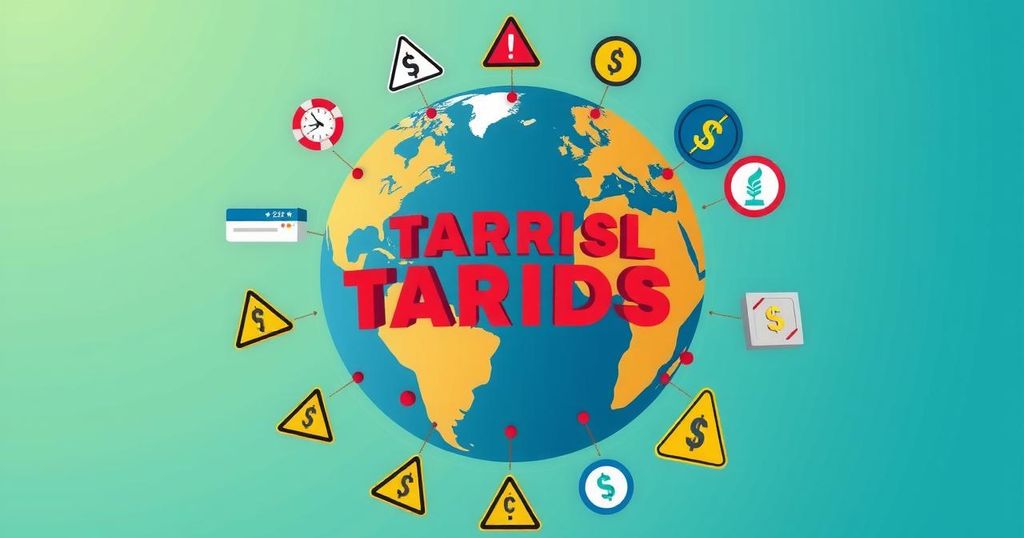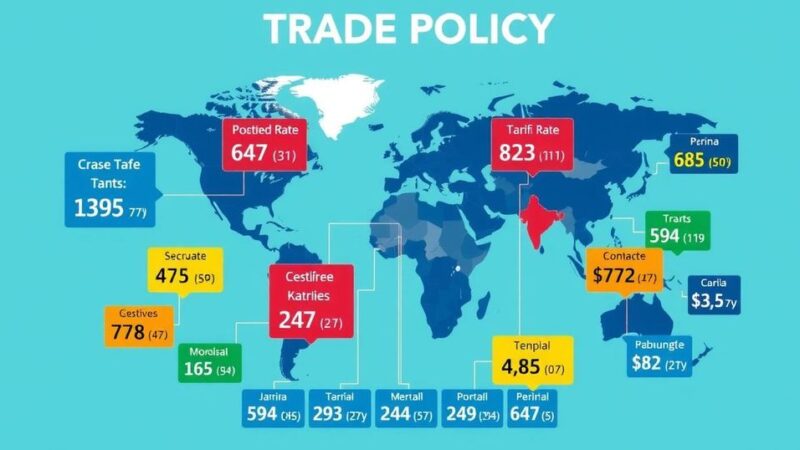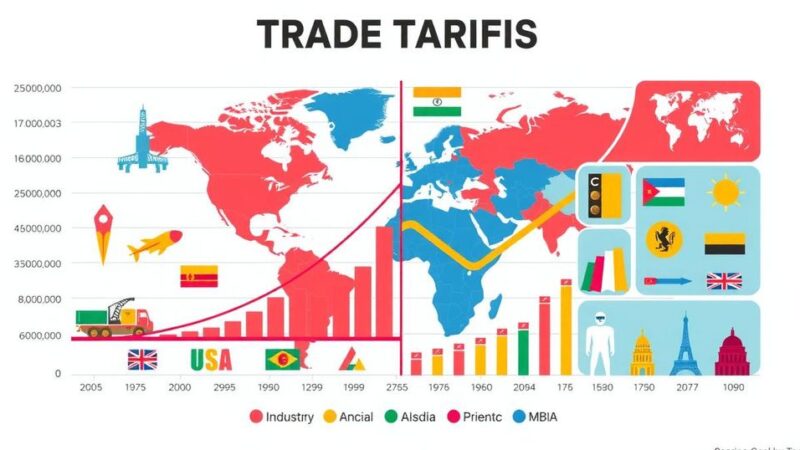US President Donald Trump has announced new tariffs, including a 10% baseline tariff to be implemented globally on April 5, with steeper rates for targeted countries like China (34%) and the EU (20%). Notably, Canada and Mexico are exempt. The initiative reflects Trump’s stance on economic independence, addressing perceived unfair trade practices while proposing additional tariffs on specific imports.
On Wednesday, US President Donald Trump introduced significant new tariffs, describing them as a “declaration of economic independence.” A 10 percent baseline tariff will be applied globally, with higher rates for certain nations classified as bad actors by Washington. This announcement is expected to disrupt international trade relations significantly.
The new tariffs are set to take effect as follows: the 10 percent baseline tariff will commence at 12:01 AM on April 5, while additional tariffs for specific countries will start at 12:01 AM on April 9. The European Union will face a 20 percent tariff, and China will experience a more severe 34 percent tariff. This new figure adds to an existing 20 percent levy on China, bringing its total to 54 percent due to previous tariffs related to illicit fentanyl supply chains.
Other countries targeted by these heightened rates include India at 26 percent, South Korea at 25 percent, and Japan at 24 percent. President Trump emphasized that the combined rates would approximate half of what these nations currently impose on American goods, as he stated, “For nations that treat us badly… we will calculate the combined rate of all their tariffs, non-monetary barriers and other forms of cheating.”
Importantly, Canada and Mexico will not be affected by these new tariffs. They are already subject to previous tariffs imposed by Trump, which include a 25 percent duty on imports with exemptions under the US-Mexico-Canada Agreement still in place. If agreements are reached, they might still encounter the baseline rate, but the latest tariffs do not apply on top of existing sector-specific tariffs.
Additionally, major economies facing sanctions, such as Cuba, Belarus, North Korea, and Russia, will not be subjected to these new tariffs due to existing prohibitions on trade.
Starting Thursday, new 25 percent tariffs will be enacted on imported automobiles and certain parts, presenting further complications for the auto industry. The earlier imposed 25 percent tariffs on steel and aluminum will also be expanded to include canned beer and empty aluminum cans.
Trump is investigating imports of copper and lumber, which may lead to additional duties in the future. There are indications of potential tariffs on semiconductors, pharmaceuticals, and critical minerals as well. Furthermore, a 25 percent tariff on goods from countries importing Venezuelan oil will be implemented from April 2, with similar threats made regarding Russian oil.
A crucial shift in policy also involves the ending of the duty-free exemption for small parcels from China. This move is likely to significantly impact the import of low-cost products. The previous exemption had facilitated the rise of Chinese online retailers like Shein and Temu. Following the new executive order, products from China would incur duties of either 30 percent of their value or $25 per item, increasing to $50 after June 1, with the policy set to commence on May 2.
President Trump’s announcement of new tariffs marks a significant shift in US trade policy aimed at asserting economic independence. The baseline tariffs and elevated rates on specific nations, particularly China, highlight a strategic focus on addressing perceived trade injustices. The decision affects various sectors while exempting key partners like Canada and Mexico. This multifaceted approach underscores the complexities and potential ramifications of such trade policies in the global economy.
Original Source: vietnamnews.vn






